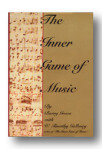In my earlier reedmaking days, I rebelled against cane sorting, believing that I could “make every piece work”. Let’s face it: I was cheap. It astounded me to see people throwing away almost 50% (and sometimes much more!) of a batch of cane that they had just received. Had I paid more attention, I would have realized that these same people spent much less time struggling to make quality reeds than I did. While every reed you make isn’t going to turn out, it’s nice to know that the reason isn’t because the cane is warped, dead, or bug-infested J
The bottom line: time is money. If you find yourself sitting at your reed desk for hours upon hours making reeds that don’t seem “quite” right (maybe they don’t seal, are a funny color or have extremely closed or open tip openings), then you could definitely benefit from being more selective with your cane.
This blog series will start at the very beginning, when cane is in tube form.
Things you will need:
-tube cane
-radius gauge (we like the one listed here, because it measures in increments of .25:
http://www.jeanneinc.com/mm5/merchant.mvc?Screen=PROD&Store_Code=JI&Product_Code=JT045&Category_Code=GM-ACC
-cane splitter or razorblades (we like this one): http://www.rdgwoodwinds.com/cane-splitter-oboe-oboe-damour-p-135.html
-several Ziploc freezer sized storage bags
1. Initial inspection of cane.
When you first get your cane, dump it all out on your workspace and examine the pieces: look at the coloring, length and general diameter of the tubes. You won’t typically be throwing anything out at this point, unless it is excessively black or green and no part of the tube can be salvaged (this has personally never happened to me). Some people begin to measure the tubes right away with their radius gauge, however I would caution against doing so at this point, as the radius of the cane can change once the cane is split.
2. Splitting your cane
Select a piece of cane and examine the outside. Does it have any markings? (some brown marks are ok and natural. Anything black or grey means the cane has died and should be cut off). Next, examine the ends: anything that is not in the shape of an “O” should be discarded (sometimes your will see “knots” in cane- this is where a shoot has started to grow off of the plant- these can be ok as long as they can be cut off after splitting). If any of the “bad” cane parts are in the same area, position your splitter so that you can cut them all off in one piece.
3. After splitting your cane, you need to determine which pieces are straight enough to keep. Get a VERY flat surface (I like to use the edge of my radius gauge) and place your split cane on it. If you can see any light underneath it, this means the cane is warped and should not be used. BE CAREFUL HERE: Many pieces of cane have ends that can be guillotined off in order to use a straight inner section of the cane. It is more obvious with some pieces than others. When in doubt, err on the side of being picky. It is not unusual to get rid of half of your cane in this stage.
4. Once you have guillotined your cane, you can measure it with the radius gauge. Take every piece and classify it by radius. If you want to be very specific, you can write the radius on each piece of cane—however, I find it easier to group them by range (common groupings are 10-10.5, 10.5-11, etc, although you could narrow them down to 10-10.25, 10.25-10.5, etc).
5. This is a good stopping place after all of your work! When you have sorted the cane by diameter, place it in plastic baggies and label them.





